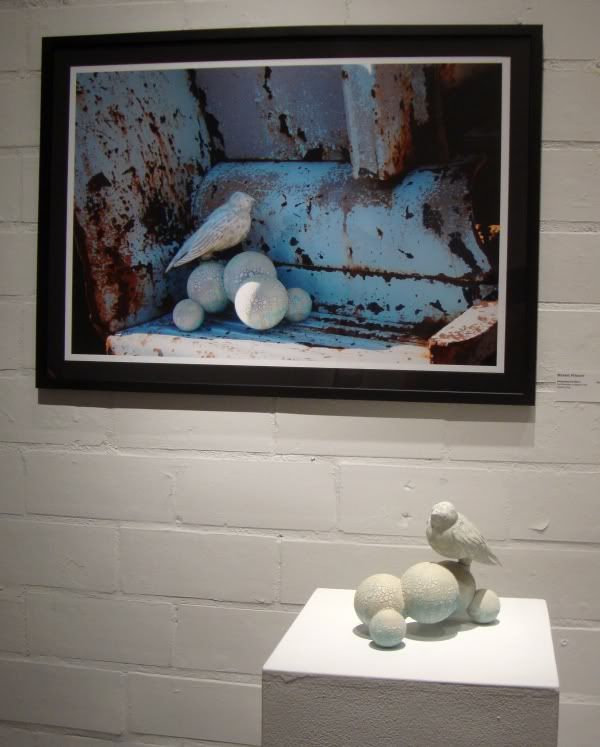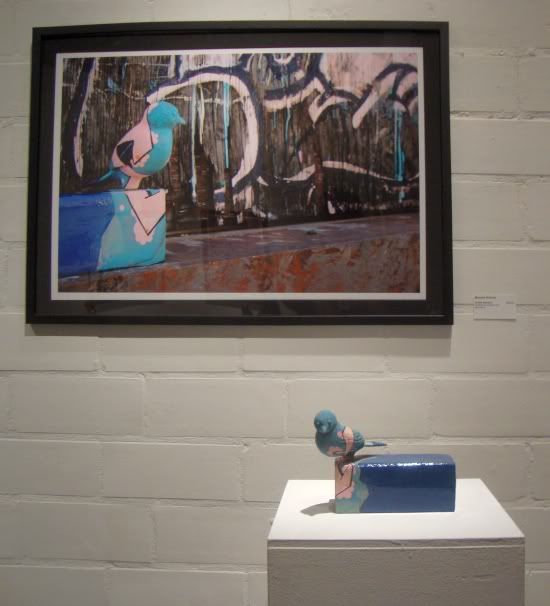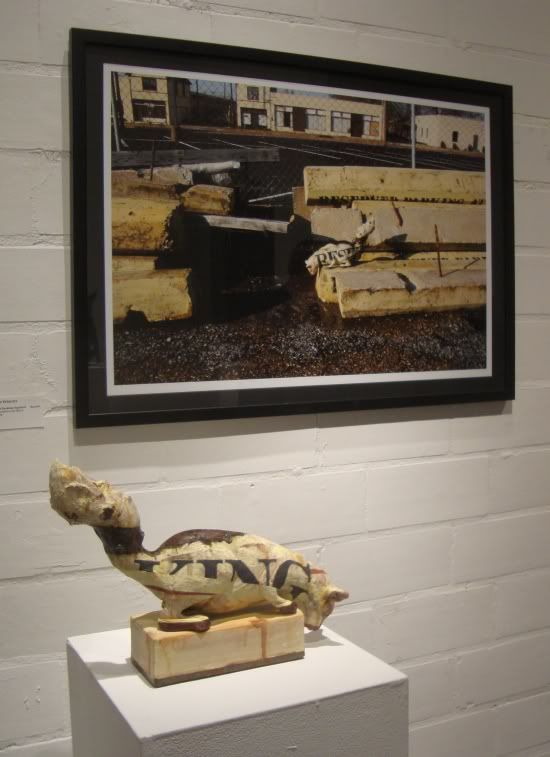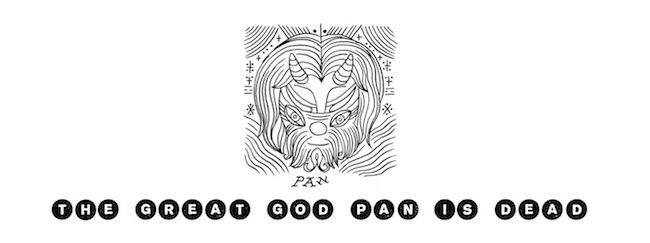
Merrie Wright, Decaying Swallow, earthenware sculpture and digital print
Merrie Wright is a ceramicist who teaches up at UT Tyler. Her show at Goldesberry Gallery combines ceramic sculptures of animals and photos of those sculptures in appropriate setting. What is amusing is that each of the animals--all of them wild animals--seems to have developed protective coloring to help them survive a tough urban environment. So the swallow above has coloring that resembles the fading, peeling paint of a park bench.

Merrie Wright, Graffiti Bluebird, earthenware sculpture and digital print
Graffiti Bluebird assume the dramatic colors of the spraypainted wall behind it.

Merrie Wright, Graffiti Bluebird, earthenware sculpture and digital print
Once you take them out of the environment, their coloring seems odd to say the least, if not completely arbitrary. Of course, the thing is that these color schemes only work as camouflage in highly specific circumstances--the bluebird has to be standing in front of a very specific piece of graffiti to be invisible--otherwise, I suspect this color scheme would call attention to itself--which would exert a lot of negative evolutionary pressure on this particular breed of bluebird.
So that begs the question--are these animals chameleons, able to change their color to fit in? That might be the case with the bluebird and swallow, but that theory falls apart with the exhibition's coyote.

Merrie Wright, Construction Zone: Coyote, earthenware sculpture and digital print
The coyote is not blending in with the background--here he is imitating a specific "natural" feature of the landscape. I think there are certain insects that do this, but this coyote is taking it to the extreme.

Merrie Wright, Construction Zone: Coyote, earthenware sculpture and digital print
Most Houstonians are familiar with urban wildlife. We've all seen squirrels and a large variety of birds, and I'd bet that most of us have seen possums, raccoons and skunks in their neighborhoods on occasion. I haven't heard of coyotes or foxes in Houston, but I've read that coyotes are becoming fairly common in other cities--even New York. And the suburbs north of Houston have been experiencing an increased deer population. These animals turn out to be extremely adaptable to urban environments, and perhaps Wright is commenting on this adaptability. (In The World Without Us, Alan Weisman predicts that if humans suddenly disappeared, wild animals would quickly recolonize human places--they are already here after all--and easily shove aside domesticated dogs, which might become extinct. He gives good odds for the survival of cats, though.)

Merrie Wright, Reserved Parking: Squirrel, earthenware sculpture and digital print
But another meaning suggested itself to me as I looked at these pieces. The standard camouflage of these animals has from time immemorial been to hide them in nature--to help them look like nature. And the practice of art from Lascaux to the end of the 19th century was, with certain important exceptions, about depicting nature--including men and women as part of nature. But as the human-made world has come to dominate, the subject of art has evolved to the depictions of human-made things. When Pop Art first hit the world, a lot of the critical and curatorial response was about how these artists were depicting mundane man-made stuff (the first Pop Art museum show was titled "New Paintings of Common Objects").
Wright's animals are like artists, who after centuries of camouflaging themselves as nature, now, in her vivid tableaux, camouflage themselves as man-made stuff. The question is whether this show is celebrating this... or regretting it.
Of course I may be overinterpreting it. I think it would be easy to feel delight looking at these pieces without digging much deeper. That you can dig deeper is a bonus.




That's my sisters pieces.
ReplyDelete